When it comes to Karate, or any other martial art, one of the most common body parts that endures injuries in practice are the hands. They are useful, yet very fragile because they consist of very small bones, joints, and soft tissue that isn’t meant for hitting hard objects or surfaces.
So, to avoid unnecessary injury, you should learn how to do proper Karate Hand Conditioning. There are many tips, tricks, and exercises you can do at home to harden your hands and make them stronger. So, if you want to learn how to do that and avoid hurting yourself while practicing Karate, keep reading this article and see what you can do.
Karate Hand Conditioning: Technique
To prevent bones and joints from getting damaged while punching, your hands need training as well as any other part of your body. When you watch movies or footage of real martial artists, it seems so easy to throw punches without any consequences. Karate masters break bricks with their hands without any problem, a guy fights off 50 attackers only with his bare hands and punches and never gets injured. Well, that is so far from the truth.
In reality, the human body – especially our joints – isn’t made for striking, and the lack of technique usually leads to injury. You should learn proper form and timing to throw punches without gloves or protective gear. Even professional boxers tend to suffer from hand injury regardless of their punching proficiency, so it’s easy to see why it’s so important.
Let’s start digging into how to train and condition your hands. After we go through the drills, we’ll help you find some of the most effective equipment to help you with your training as well.
Karate Hand Conditioning: Drills
Historically speaking, martial arts training was a lot less sophisticated before than it is now. We knew less about the human body science-wise, so training was a lot more robust and extreme. Practitioners would try to strengthen their bones by hitting hard objects. Trees, walls, bricks, or only other aid they had at their disposal.
It was thought that, by creating microfracture in the bones, they will get more thick and tough after healing. Essentially, that is true, but it carries a lot of risks, too. You can damage the blood vessels, nerves, and bone structure if you endure major fractures, so it can ultimately lead to the opposite of what you wanted to accomplish. Some alternatives are safer and more effective than hitting a brick wall.
1. Gradually Work From Softer Gloves to No Gloves
A big part of avoiding injury while punching is the technique. You need to learn how to punch properly before actually using it in combat or self-defense. Hitting a wall without gloves and proper technique will almost surely cause injury. So, you should start your training with larger, softer gloves and bandages.
Practice on a punching bag. Perform jabs, hooks, and other punching methods to get a feel of how you should hold your hand, what’s the optimal speed of your punches. Work gradually to smaller, less protective gloves, and work your way to no gloves once you are sure that you have the proper technique and you know how to throw punches properly.
This will toughen your knuckles, but will also provide you with stronger joints both in your fingers and your wrist. If you do this first, it will be a lot easier to toughen up your hands and start working on more complex techniques and strikes, especially when it comes to Karate.
2. Iron Palm
This method of training goes back centuries, all the way to ancient China and their initial martial arts. It is training almost solely focused on toughening the wrists and hands. If done properly, it will allow you to deliver strikes with immense power without injuring yourself.
To perform this exercise, you’ll need a sandbag or a striking pad. You can fill a bag with rice, hard cotton, or any kind of material that will provide you with padded amortization of your strikes. We’ll give you some suggestions on how to get a proper striking bag later in the article.
Put the bag on the floor or any other hard surface, and perform a series of strikes. First, slap the bag normally, as you would slap a person. Then, slap it with the back of your hand. You’ll make the soft tissue of your hands more durable and used to impact.
After that, start hammer fisting the bag – while it’s on the floor, clench your fist and hit the bag not with your knuckles, but with your hand. Imagine performing a Karate Chop, only with your fist clenched.
Next, punch the bag with your knuckles. First, perform regular punches, and then, do it with your middle knuckles. Don’t go too hard at the beginning, because the bones in your fingers are really small and can easily break. You should work on your power gradually, as you get to feel more and more comfortable with the training.
There is also finger striking. Spread your palm and fingers, but try to hold them stiff, not loose. Strike the bag in a poking fashion with the tips of your fingers. You will see how, with time, you can deliver more and more power without feeling the impact hurting your hand and fingers.
You should repeat the process daily. It is important to take it slow – nothing works like magic overnight. As you progress, make the training harder and harder. Get a harder bag (or replace its contents with something harder if you have a home-made pad) or up your repetitions for each exercise as much as you feel comfortable with.
3. Bag & Wall Punching
This works as a combination of the two types of training we mentioned earlier. Instead of using a big punching bag, get the bag you used for the Iron Palm training and attach it to a wall. It simulates a potential attacker or enemy while providing you with a nice, hard surface to practice on.
Just like with all other methods, you should gradually progress and increase both the repetitions for each strike and the thickness of the bag itself. If done properly, this is one of the best Karate Hand Conditioning exercises, because it helps both with your strength and precision of strikes.
4. Finger/Fist Push-ups and Pull-ups
For this one, you don’t even need any equipment. Your body weight will be more than enough! Instead of doing regular push-ups, try to do them on your knuckles (clenched fist) instead of your palms. Not only does it toughen the knuckles, but it toughens the joints in your fingers and your wrist as well.
You can also do push-ups on your fingers! Start with five on each hand, and slowly try to remove fingers one by one as you progress with your training. This is one of the best ways to toughen and strengthen your hands because it makes you work on all the little bones, muscles, and joints at the same time. However, to make your hands more resistant to injury, it is best to combine this technique with others that use impact as well, such as the Iron Palm.
One more incredible way to make your fingers stronger is finger pull-ups. Don’t clinch the bar with your entire hand, but rather your fingers alone. It will be hard, but with time, you’ll be able to pull up only by using a finger or two. Persistence, effort, and repetition are all you need.
5. Bucket practice
It works almost the same as the Iron Palm but is easier to make if you’re unable to buy equipment. Get a bucket and fill it with sand, rice, or pebbles. Perform the Karate Hand Conditioning strikes we mentioned before into the filled bucket (finger strikes, chops, etc.). As you advance with your training, switch to a thicker material in the bucket and up your repetitions.
Karate Hand Conditioning: Equipment
1. Makiwara Bags and Boards
Makiwara is a “padded striking board” used for Karate Hand Conditioning. We’ve mentioned you might need one for Iron Palm training before. You can buy a professional bag with replaceable contents (from softer to harder), or make one yourself.
CHENGYI Makiwara Wall Mounted Sand Punching Bag
Made with high-quality canvas, this durable punch bag is perfect for home or gym use. Practice your martial arts skills, punching and kicking with this versatile bag. Its tough canvas construction ensures repeated use, while solid steel grommets allow for easy mounting. With a size of 15.7″ width x 15.7″ length, this bag is ideal for hand palm conditioning. Fill it with rice, beans, sand, or other materials to achieve your desired weight.
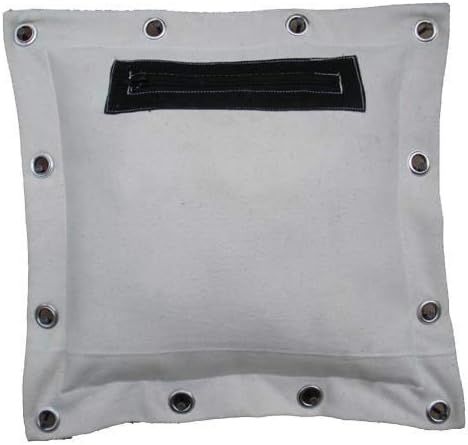
Pros
- Durability
- Good size
- Good quality of materials
- Setting up and using the bag is simple and straightforward
- Effective for practicing punches and toughening up for martial arts
Cons
- Low-quality zipper
Padded boards are also commonly used in training, and can provide you with a lot more targeted practice, helping you with your precision.
Rebreakable Board by Victory Martial Arts
These rebreakable karate boards are designed to enhance your martial arts skills while providing convenience. Crafted with high impact molded plastic, they are built to withstand powerful strikes. The rubber padding on both sides ensures a secure grip for the holder, allowing for precise and controlled breaks. The Rebreakable Board offers easy reusability, allowing you to break it, slide it back together, and break it again. Featuring the Victory Martial Arts logo, these boards make it easy to aim for the center and improve your accuracy.
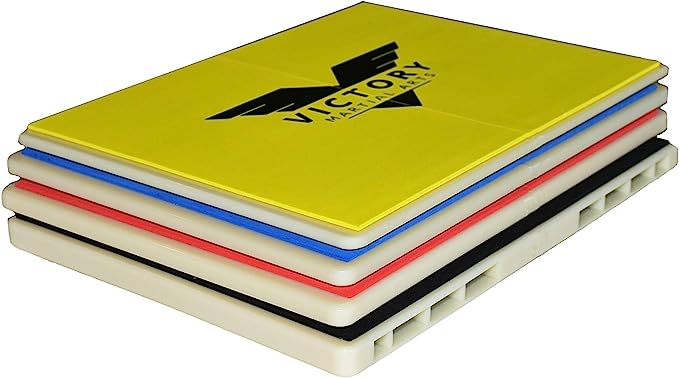
Pros
- Realistic practice experience for breaking real wood boards, helping to prepare for martial arts tests and tournaments
- Sturdy and comparable to other well-known brands in terms of quality and performance
- Allowes for home practice and saves money compared to using real boards
- Suitable for kids
Cons
- May weaken or crack after a short period of use
- Foam padding is thin
2. Pull-up bar
A pull-up bar can be used to improve the strength of your upper body, arms, forearms, wrists, hands, and fingers. It will improve your grip as well as your overall strength, so it can be really useful in Karate Hand Conditioning.
ProsourceFit Multi-Grip Lite Pull Up Bar
Its multifunctional design offers 12 comfortable grips for a variety of exercises, from wide to hammer and close-grip. Strengthen your entire upper body, including abs, with pull-ups, sit-ups, push-ups, dips, and leg raises. The easy-to-assemble and install slip-in design fits standard doorways, and optional foam covers protect doorframes. Made of durable steel, this portable bar holds up to 300 lb. and comes with an exercise guide.
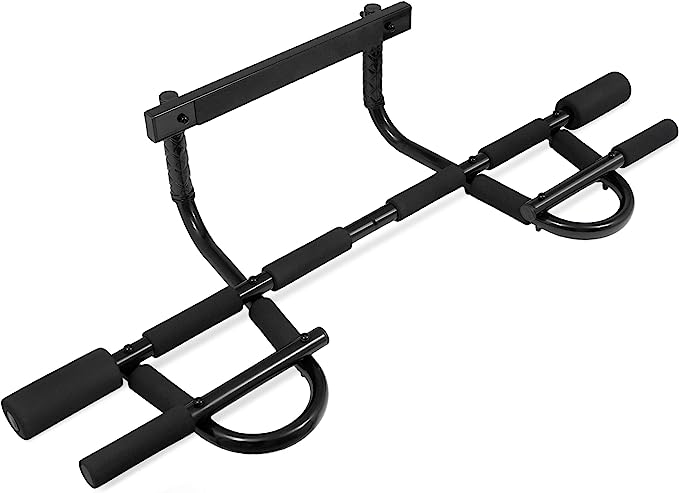
Pros
- Sturdy construction
- Secure fit without using additional wall hooks or brackets
- Versatile grip options:
- Affordable price
- Space-saving and portable
Cons
- The foam padding on the bar can feel too thin
3. Classic punching bag
A classic punching bag can also be a great aid for you to start your training. Remember, we said you should work on proper striking techniques with gloves before you try to perform them without gloves? Well, the best way to do that is with a punching bag, so you should consider buying one.
Last Punch Heavy Duty Punching Bag with Chains
Made of pro-quality black canvas, this bag offers durability and reliability. Fill it up with your preferred materials like plastic bags, old clothes, or cotton for a customized experience. With dimensions of 48″ lenght with chains (33″ without chains) and 18″ width, it provides ample surface area for a satisfying workout.
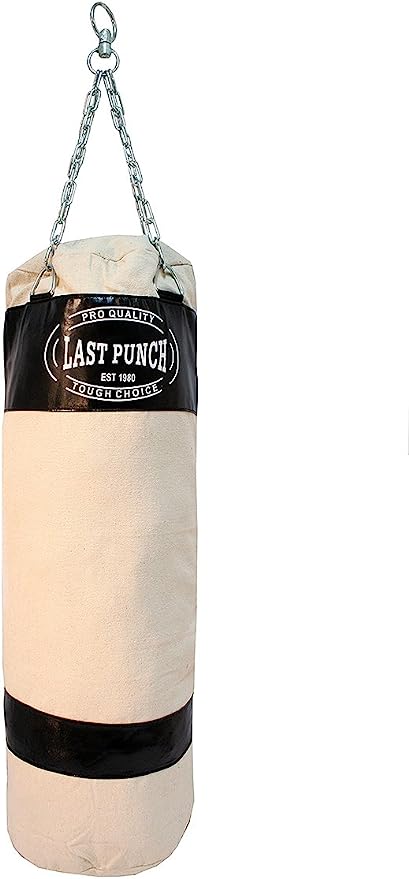
Pros
- Good value for the price
- Sturdy construction
- Customizable weight
- Suitable for workouts, providing a cardio tool
- Included hanging apparatus
Cons
- Small size
4. Hand Grips
The hand grips are an incredible way of building up muscle strength both in your hand and your forearm. The classic grip trainers are all you need.
Logest Metal Hand Grip Set
Expertly crafted with durable alloy steel construction and lightweight aluminum handles, these hand trainers offer a productive workout wherever you go. Targeting forearms, fingers, and wrists, they help build strength for lifting heavier weights. Choose from three different sets, each with varying levels of resistance. Start gradually and increase resistance with each 50-pound increment.
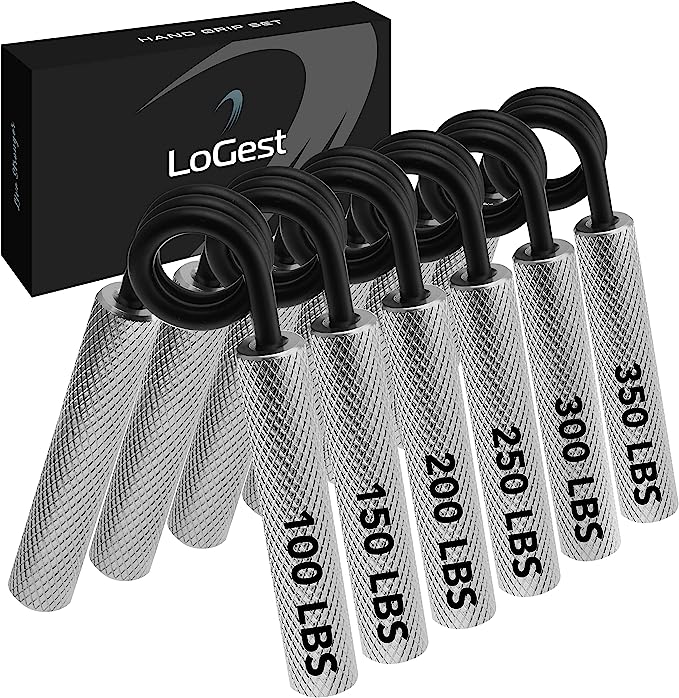
Pros
- Economical compared to other well-known brands in the market
- Sturdy construction and attractive design
- Grippers provide a challenging workout and help in improving grip strength over time
Cons
- Texture of the grip can be uncomfortable
- Grips may feel rough and have a sharp edge
But, some advanced grips can digitally measure the strength of your hand grip as well as its speed, so you can keep track of your progress.
CAMRY Digital Hand Dynamometer Grip Strength Measurement Meter
This user-friendly device accurately measures your gripping power, displaying the maximum grip value and a status bar indicating strength level. With memory record capability for up to 19 users, you can track progress and compare results. The adjustable gear ensures a comfortable fit for hands of all sizes, while the large LCD screen provides clear and easy-to-read measurements. Perfect for home, sports, and clinical use, this dynamometer comes with batteries and a 5-year warranty.
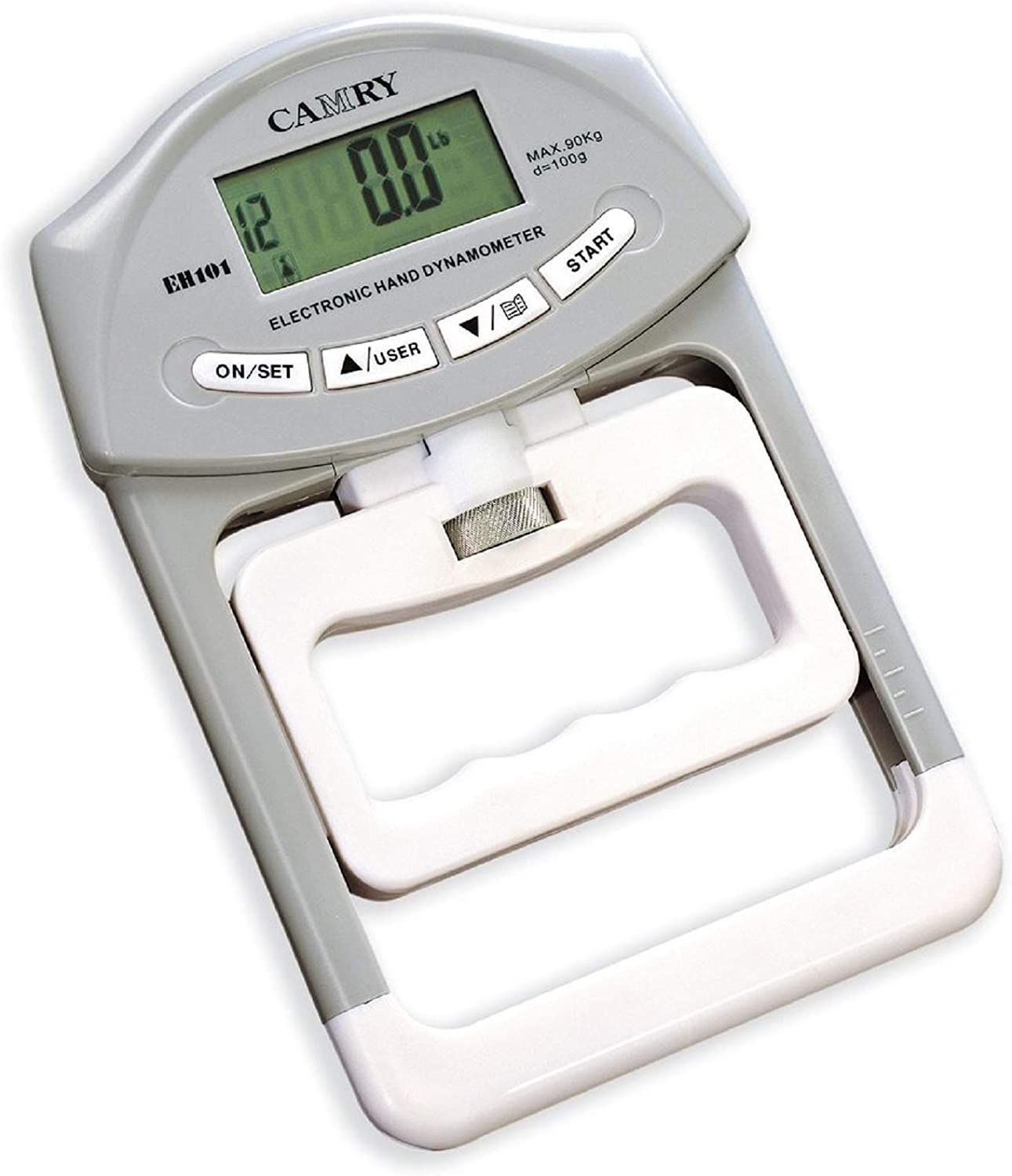
Pros
- Ease of use
- Portable
- Good value for money.
Cons
- Limited range, can’t measure grip strength beyond a certain level
